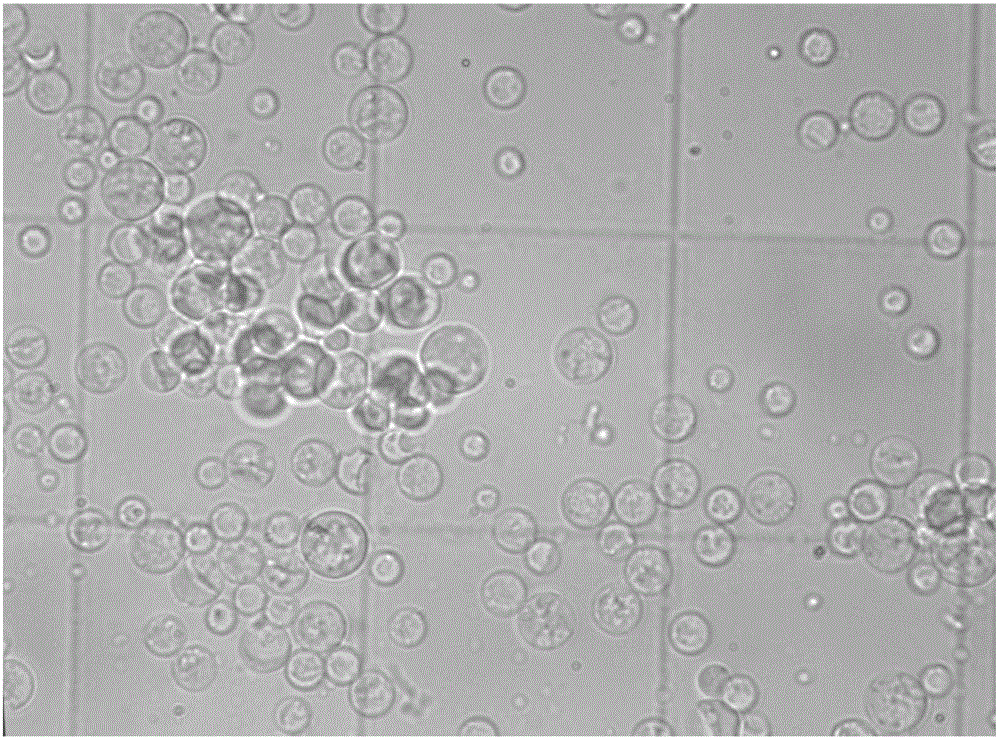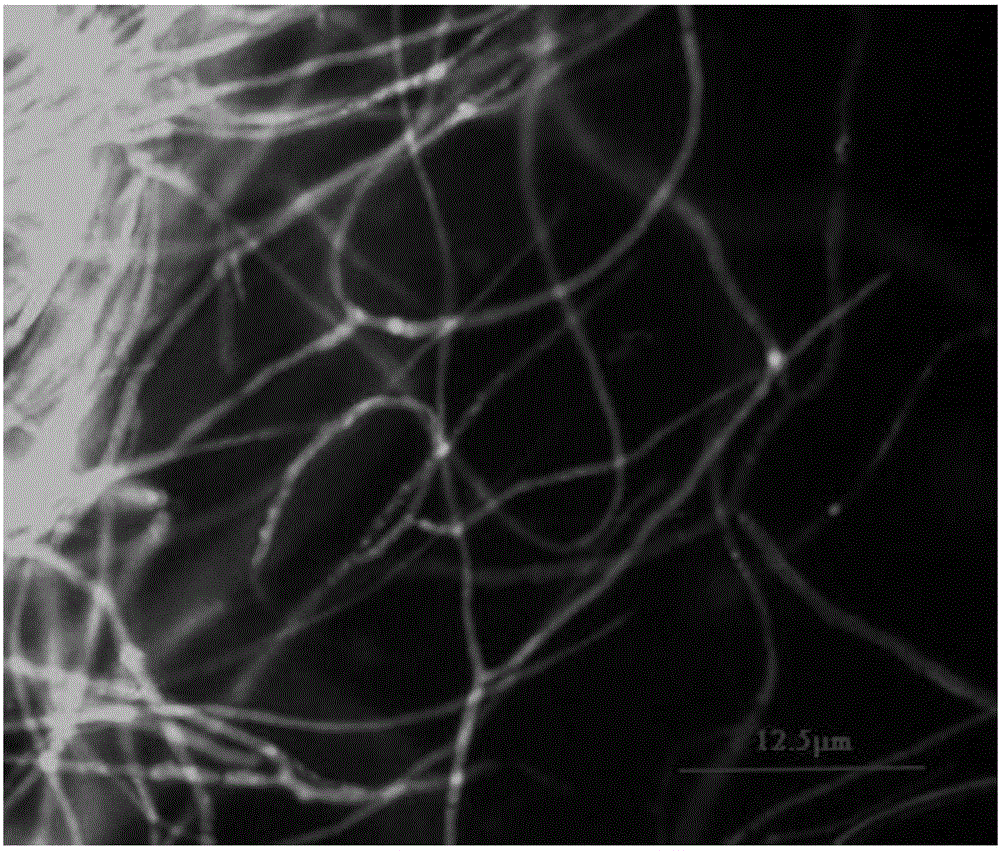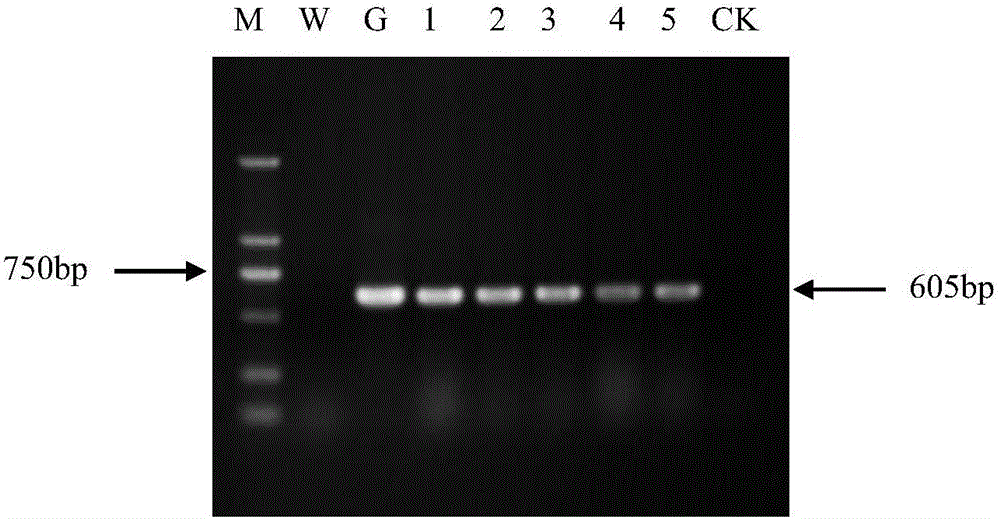Cytospora chrysosperma protoplast preparation method and prepared protoplast conversion method
A technology of rotting pathogens and protoplasts, applied in the field of molecular plant pathology, can solve problems such as inapplicable Ascospora aureus
- Summary
- Abstract
- Description
- Claims
- Application Information
AI Technical Summary
Problems solved by technology
Method used
Image
Examples
Embodiment 1
[0078] Example 1 Reagent preparation
[0079] 1. PDA solid medium
[0080] Potatoes 200g, D-glucose (D-glucose) 20g, agar 15g, sterile water to a volume of 1L, placed at 120°C, sterilized for 30min.
[0081] 2. Osmotic fluid (protoplast buffer)
[0082] Add KCl to a concentration of 10 mM NaH 2 PO 4 In the solution, stir and dissolve evenly to make a mixed solution in which the molar concentration of KCl in the solution is 1.2M; then dropwise add Na with a molar concentration of 1M 2 HPO 4 Solution, the pH value of the mixed solution is adjusted to 5.0-7.0, preferably 5.5-6.0, and made into a stabilized seepage solution for subsequent use.
[0083] 2. Enzyme hydrolysis solution (cell wall lysate)
[0084] Add Driselase Enzyme (collapsing enzyme) and Lysing Enzyme (lysing enzyme) into the steady seepage solution, stir and dissolve evenly, and prepare protoplast enzymatic solution, wherein, the concentration of Driselase Enzyme in the enzymatic solution is 15-25mg / mL, pref...
Embodiment 2
[0100] The preparation of the protoplast of embodiment 2 poplar rot fungus
[0101] 1. Preparation of conidia suspension
[0102] Pick activated poplar rot fungus (Cytospora chrysosperma (Pers.) Fr., China Forestry Microorganism Culture Collection and Management Center, preservation number CFCC 89981) and inoculate it in Cytospora chrysosperma medium (PDA solid medium), cultivated in the dark at 25°C for 15-60 days, after it produced conidia horns, picked the conidia horns, and made poplar rot fungus (i.e. golden ascocysts) with sterile water Bacteria) conidia suspension, wherein the conidia concentration of Ascosporium aureus in poplar rot pathogen conidia suspension is 10 7 -10 8 conidia / mL.
[0103] The Ascosporium aureus conidia concentration of preparation in the embodiment of the present invention is 5 * 10 7 conidia / mL.
[0104] 2. Mycelia culture and collection
[0105] 2-1) Put 1mL poplar rot fungus conidia suspension and 100mL YEPD liquid culture into a sterili...
Embodiment 3
[0113] Example 3 Genetic transformation of poplar rot fungus protoplasts
[0114] 1. Preparation of protoplast solution
[0115] 1-1) Place the protoplasts of poplar rot fungus (i.e. Ascospora aureus) prepared in Example 2 in a centrifuge tube, then add an appropriate amount of STC buffer, and mix with the tip of a 5mL pipette Evenly, the poplar rot fungus protoplast is suspended in the STC buffer solution to make the poplar rot fungus (i.e. Ascosporium aureus) protoplast mother liquor, for subsequent use;
[0116] 1-2) Use a hemocytometer to count the number of protoplasts in the protoplast mother liquor, add STC buffer solution to dilute the protoplast mother liquor according to the counting results, and obtain a protoplast concentration of 10 7 -10 8 protoplasts / mL of protoplast solution.
[0117] In the embodiment of the present invention, a hemocytometer is used to count the number of protoplasts in the protoplast mother liquor, and the counting results show that the c...
PUM
 Login to View More
Login to View More Abstract
Description
Claims
Application Information
 Login to View More
Login to View More - R&D
- Intellectual Property
- Life Sciences
- Materials
- Tech Scout
- Unparalleled Data Quality
- Higher Quality Content
- 60% Fewer Hallucinations
Browse by: Latest US Patents, China's latest patents, Technical Efficacy Thesaurus, Application Domain, Technology Topic, Popular Technical Reports.
© 2025 PatSnap. All rights reserved.Legal|Privacy policy|Modern Slavery Act Transparency Statement|Sitemap|About US| Contact US: help@patsnap.com



